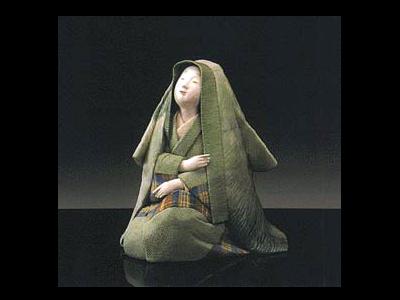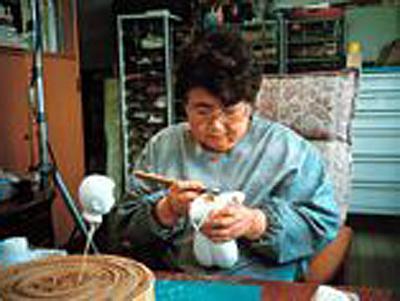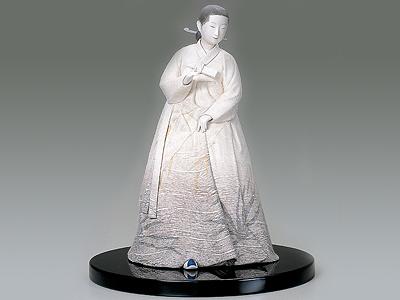|
Nobuko Akiyama was born in 1928. Her real name is Nobuko Imai, while Nobuko Akiyama is her working name. She was designated a Living National Treasure for her 'costume dolls'.
In 1956, she studied under Obayashi Sono, a dollmaker. At this time, she absorbed the ways to work with traditional materials and techniques of dollmaking such as 'tuso' (a mixture of clay and paulownia), 'gluing with paper' and 'graining'. The costumes for her dolls are made with cloth from traditional late-Edo and early-Showa kimonos. In addition, the posture of her dolls can be freely adjusted.
The sophistication of the dolls and their costumes could only be possible because of the traditional materials she uses and her highly-trained skills. The character of the dollmaker appears in the dolls they make. Akiyama's dolls somehow have a 'warmth' as well as style.
In 1956, she studied under Obayashi Sono, a dollmaker. At this time, she absorbed the ways to work with traditional materials and techniques of dollmaking such as 'tuso' (a mixture of clay and paulownia), 'gluing with paper' and 'graining'. The costumes for her dolls are made with cloth from traditional late-Edo and early-Showa kimonos. In addition, the posture of her dolls can be freely adjusted.
The sophistication of the dolls and their costumes could only be possible because of the traditional materials she uses and her highly-trained skills. The character of the dollmaker appears in the dolls they make. Akiyama's dolls somehow have a 'warmth' as well as style.
| [+ADDRESS] | 
|






















